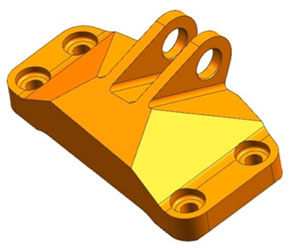In the latter stages of writing The Future Is Smart, I came across Local Motors, an amazing company that is not only an IoT innovator but also might pr0vide a model to revolutionize American manufacturing in general.
I’d read an article years ago about the company when it was locally-based, but since it was focused entirely on off-road & fast cars at the time (both of which leave me cold) I didn’t follow up.
Now it’s diversifying into a cute small urban shuttle device, the Olli, which is being produced at Local Motion’s Knoxville microfactory, taps IBM’s Watson, and which they label “the world’s first self-driving cognitive vehicle.” Very cool.
co-creation
The first of Local Motor’s revolutionary aspects is its design process, which it labels “co-creation” (AKA crowdsourcing — in fact founder/visionary John B. (Jay) Rogers, Jr. says he was inspired by the Jeff Howe book of the same name). It uses a SaaS platform, where the company posts design challenges, and then community members (some experts, some just enthusiasts) offer their ideas. Eventually, the community votes on which designs to actually produce:
“An active process where brands and their customers work together with solvers, designers, and engineers to accelerate product and technology development. We call this group our Community and proudly work to empower genius ideas and brilliant solutions from Community members across the globe.”
The participatory aspect even extends to the shop floor: buyers can opt to personally take part in the final assembly process (and designs are also easily customized after the sale as well).
The company has also provided consulting services on co-creation for organizations ranging from the US Army to Airbus.
This is not unlike my “share data, don’t hoard it” IoT Essential Truth, which is also at the heart of my Circular Company vision: when you involve and empower a wide range of people, you can unleash creativity that even the most talented person can’t.
direct digital manufacturing
The second Local Motors innovation is use of creative technologies, especially 3D printing, in manufacturing, what they call “direct digital manufacturing (DDM).” The process mimics what Siemens does at its “Factory of the Future,” where complete digitalization gives them quality, precision, and the opportunity for mass customization:
“DDM creates significant unfair advantages: the ability to produce parts directly from a CAD file; elimination of investments in tooling; reduction in time lag between design and production and, best of all, elimination of penalties for redesigns — unlocking mass customization that was previously unobtainable.”
According to Chief Strategy Officer Justin Fishkin, the economies possible with the DDH approach means the Rally Fighter model was profitable after only the 60th one was built.
microfactories
I’ve written before about Ford’s River Rouge plant, the ne plus ultra of the first Industrial Age: iron ore went in one end of the 1 x 1.6 mile factory and Model Ts came out the other.
By contrast, Local Motors is building several supermarket-sized “microfactories” around the globe at a cost 1/100th of that for conventional car plants, which “..will also act as points of sale, or what Fishkin calls ‘experiential dealerships.’”
The jury’s still out on Local Motors (Rogers, for example, has come in for some scathing tell-all comments by former employees), but even if it isn’t a roaring success, it will have a lasting legacy for challenging such long-held assumptions about the entire design/build process. and for exploiting the full benefits of digitization. It’s the essence of Christensen’s disruptive innovation.
We’ll be watching


